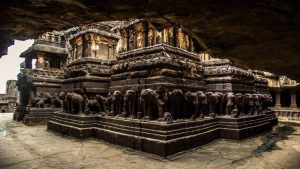Aurangabad
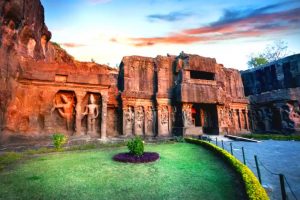
The name of the city means “built by the throne” and it was once capital of India, named after Mughal Emperor Aurangzeb. Aurangabad city rise trading hub four centuries ago .The city was a major silk and cotton textile production center, creating a fine blend of silk with locally grown cotton developed as Himroo textiles as well as Paithani silk saris. Some of the finer attractions to this area include the great number of cave temples, both within the local area and in outlying areas. Below is the list of famous tourist Places to visit in Aurangabad.
Famous Tourist Places to visit in Aurangabad
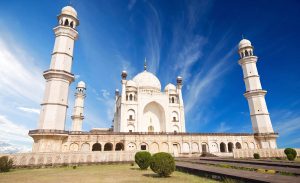
Bibi-Ka-Maqbara:
The burial place of the Mughal Emperor Aurangzeb’s wife, Rabia-ud-Durrani, this regal structure is an imitation of the TajMahal at Agra. Due to same design, it is known as the “Mini Taj of the Deccan”.
Gates in Aurangabad:
Known as the “City of Gates”, Aurangabad stands out from the several other medieval cities in India by its 52 gates, large vaulted passageways that define sections of the older city. Each of the gates has a specific history, often connected to local individuals or events.
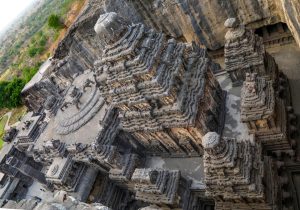
Aurangabad Caves:
Nestled amidst the nearby hills are 12 Buddhist caves, likely dating back to the 6thand 7thcenturies, carved from solid faces of basalt.
Kali Masjid and Jumma Masjid:
Among the mosques in Aurangabad, the Kali Masjid and the Jumma Masjid are the most intriguing. Malik Ambar is said to have built seven mosques in the 17thcentury which go by the general name of Kali Masjid. The Jumma Masjid has fifty polygonal pillars arranged in five rows, connected by a system of arches, which divide the building into twenty-seven domed compartments invited visitors to roam throughout.
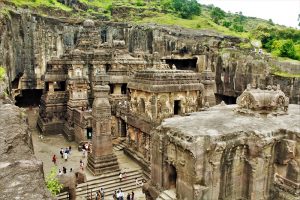
Ellora:
Ellow is world famous caves, it was listed in Unesco World Heritage Site and it is shown the embodiment of Indian rock cut architecture. The 34 “caves” are not traditional caves but are instead more structures excavated out of the jet black basalt face of the Charanandri hills. Buddhist, Hindu and Jain rock-cut temples were built between the 5thcentury and 10thcenturies and their close proximity demonstrates the religious harmony prevalent during this period of Indian history.
The Kailasanatha:
Although each of the 34 caves at Ellora may be seen as a highlight in its own right, Cave 16, also known as the Kailasa or the Kailasanatha, is the unrivaled centerpiece of Ellora. it looks like a freestanding, multi-story temple complex. However, upon closer inspection, it is revealed that it was carved out of one single rock, measuring approximately 100 meters by 100 meters by 30 meters and encompasses an area twice the size of Parthenon in Athens. Holding the title of the largest monolithic structure in the world, the temple initially was covered with white plaster and thus even more increasing the similarity to snow covered Mount Kailash. A two-story gateway opens to reveal a U-shaped courtyard so immense that one must crane upwards to take it all in. The caves yard is bordered by columned galleries three story high, point by big sculpted panels and alcoves hold enormous sculptures of a variety of gods. Originally flying bridges of stone connected these galleries to central temple structures, but these have fallen in the ensuing centuries. Awe-inspiring by is presence alone, this temple begs disbelief given its single solid mass construction that took nearly 150 years to complete with the precise removal of over 200,000 tons of rock.
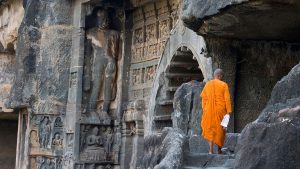
Ajanta:
Home to a similar set of caves to Ellora, Ajanta dates back to an earlier historical period. Believed to have been cut from the 2ndcentury BCE to the 5th century CE, these 30 caves are located in a large horseshoe shaped escarpment above the sharply bending Waghore River to the northeast of Arangabad. This site was believed to be abandoned about 500 CE, just as the Ellora caves began to be constructed, allowing the dense jungle to reclaim the marvelous rock wall structures and shield them from harm over many centuries until their rediscovery in 1819.
Ajanta Caves:
Like those at Ellora, each of the Ajanta Caves may easily be considered noteworthy. However, the overall feature of these caves is the presence of beautiful wall paintings which have survived remarkably over the centuries. The paintings appear on almost every surface of the cave except for the floor. At many places the art work had been destroyed to blight and human interference and many areas of the painted walls pillars and ceilings are incomplete. The caves include paintings and sculptures are considered to be masterpieces of Buddhist religious art as well as the frescoes that are reminiscent of the Sigiriya paintings in Sri Lanka.
 +91-9968737942
+91-9968737942 









